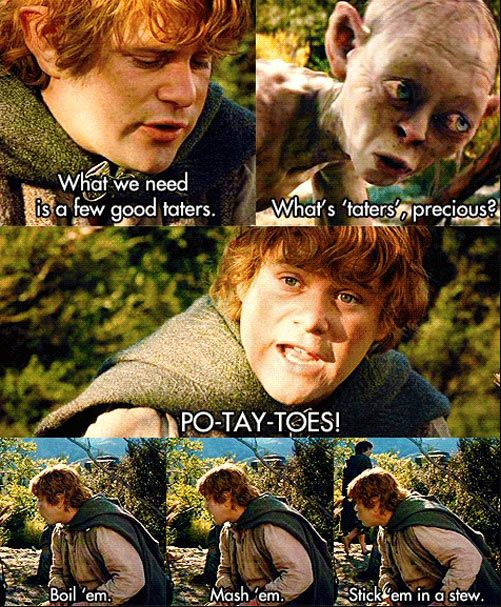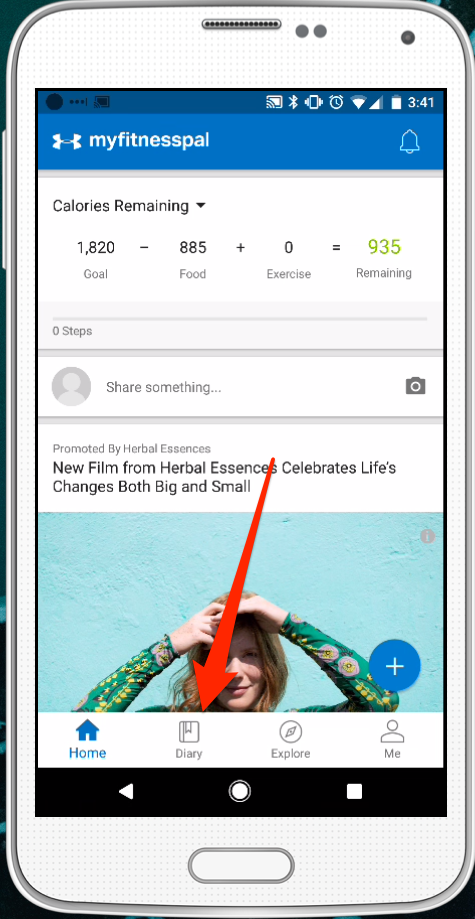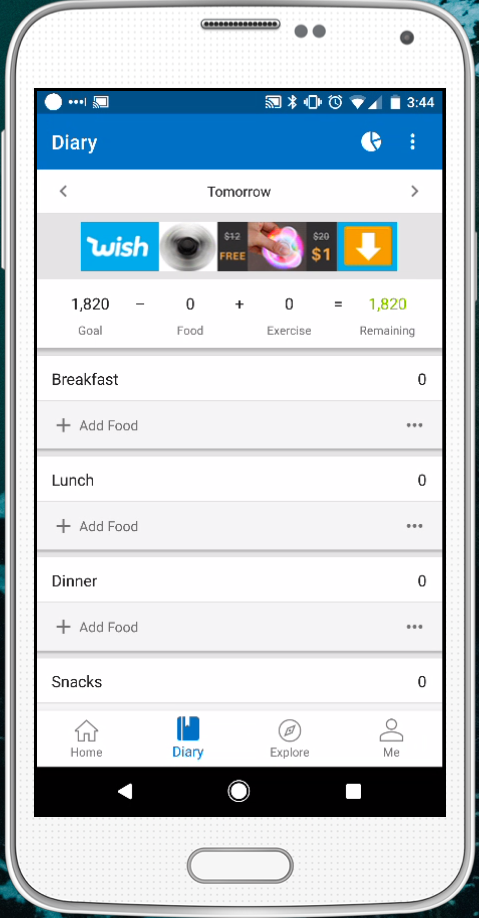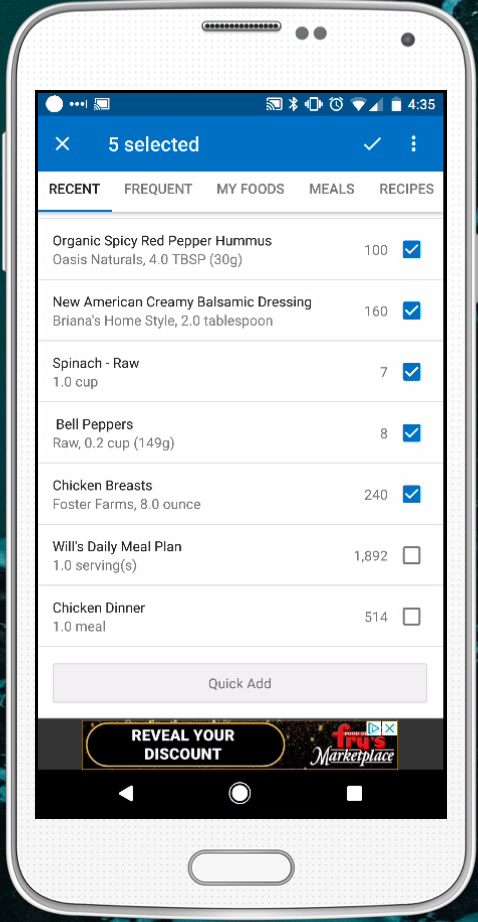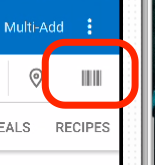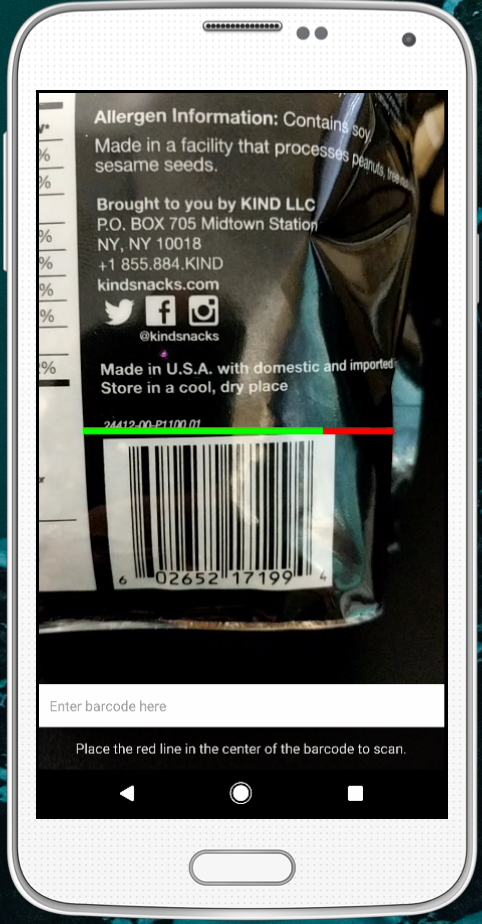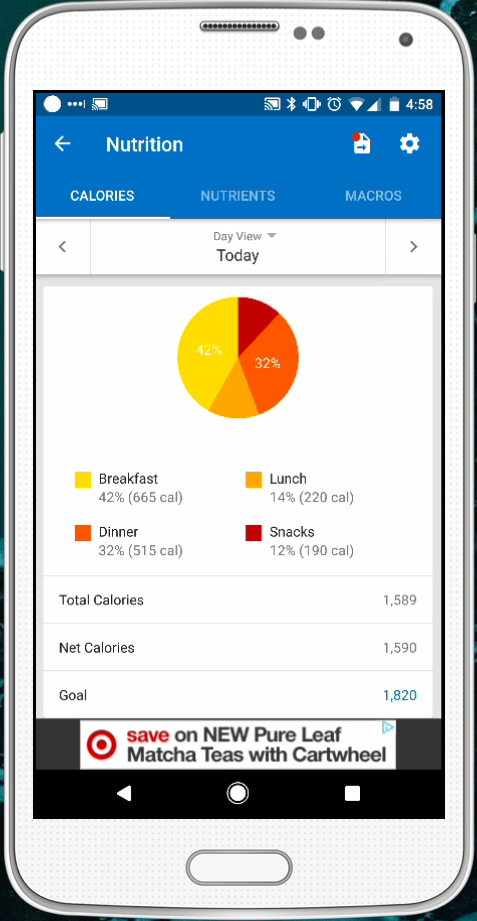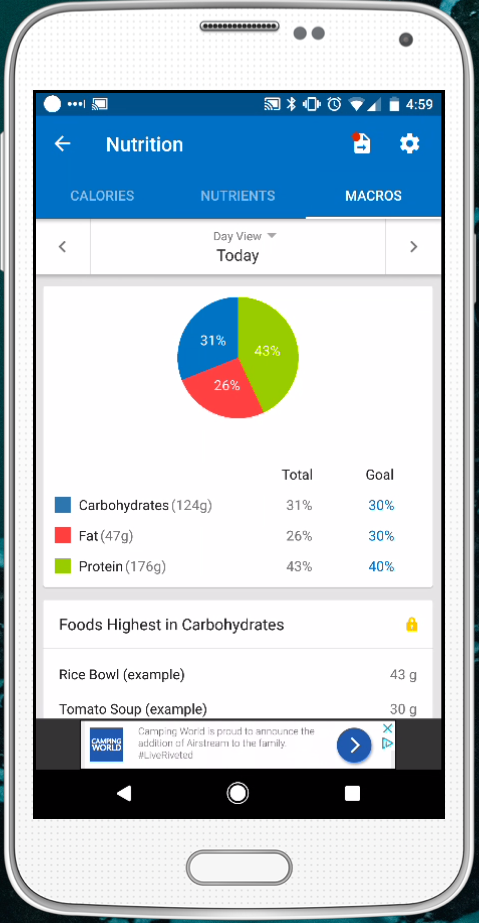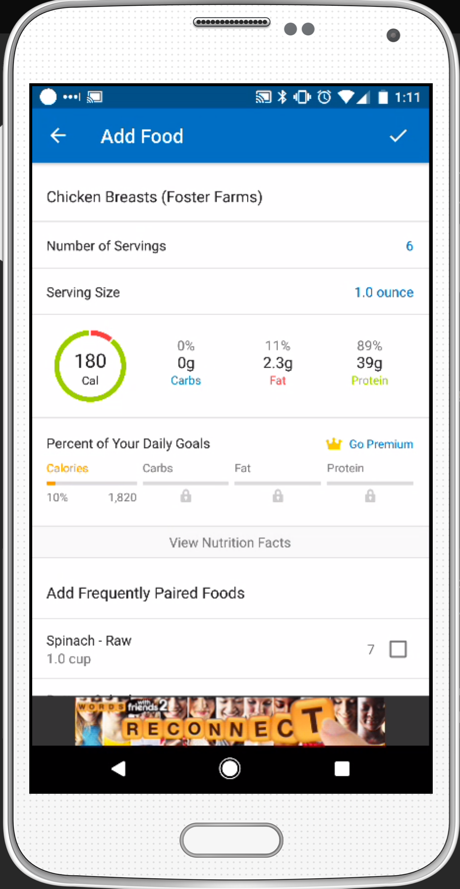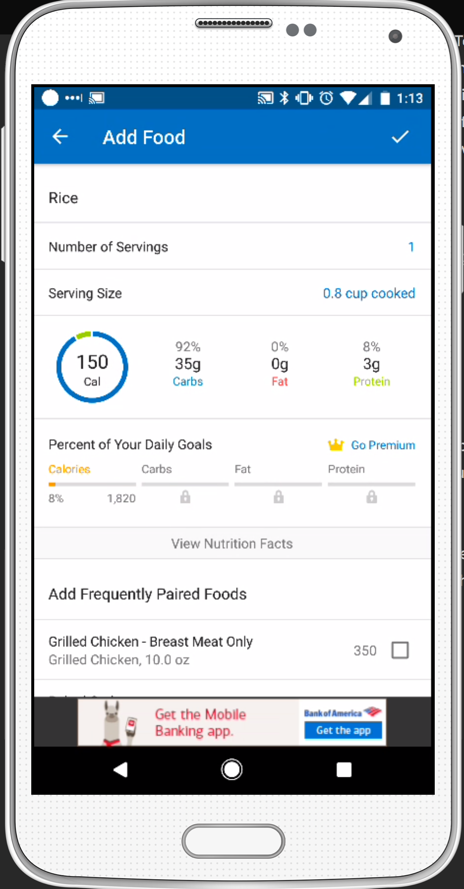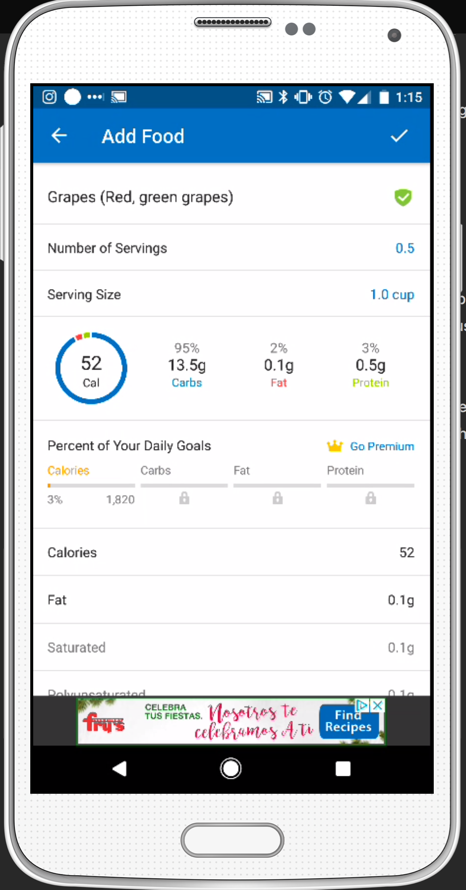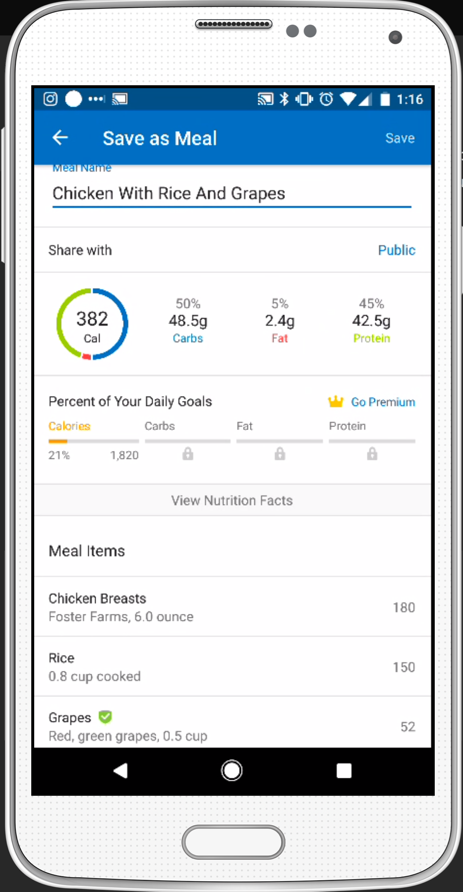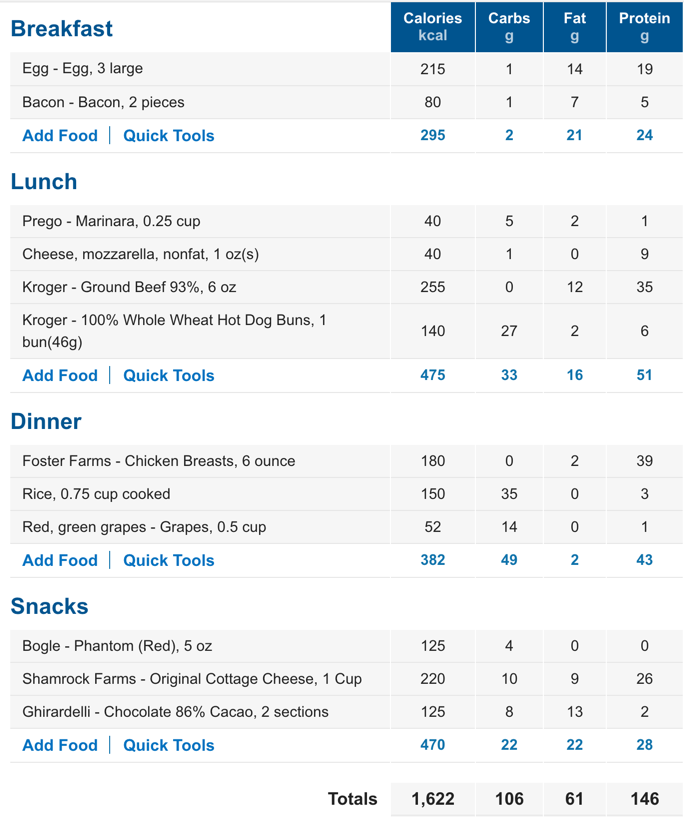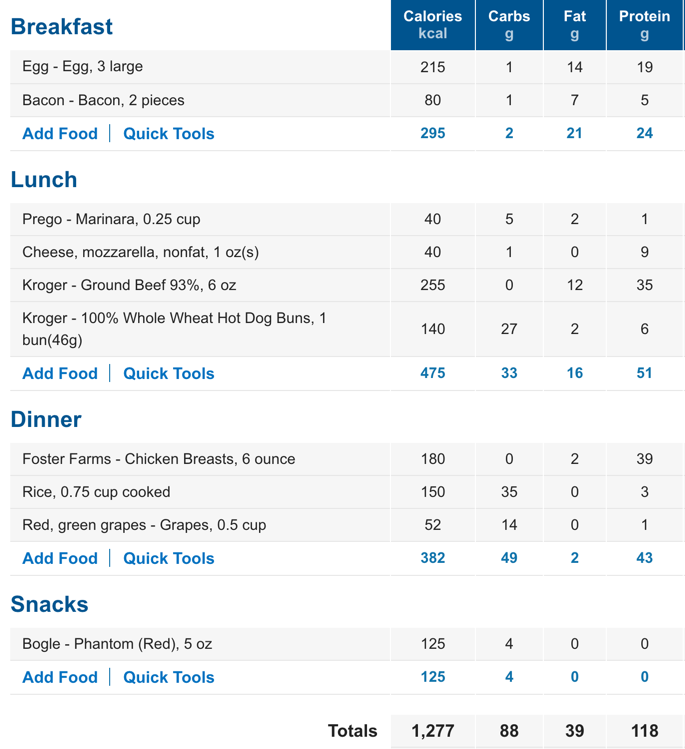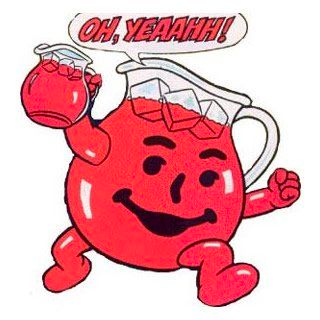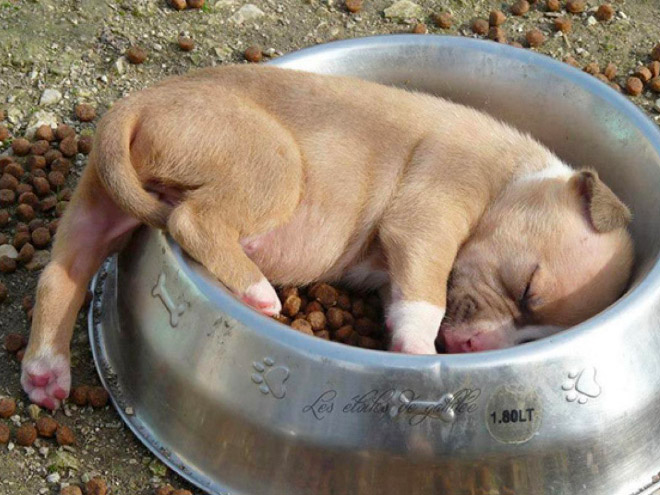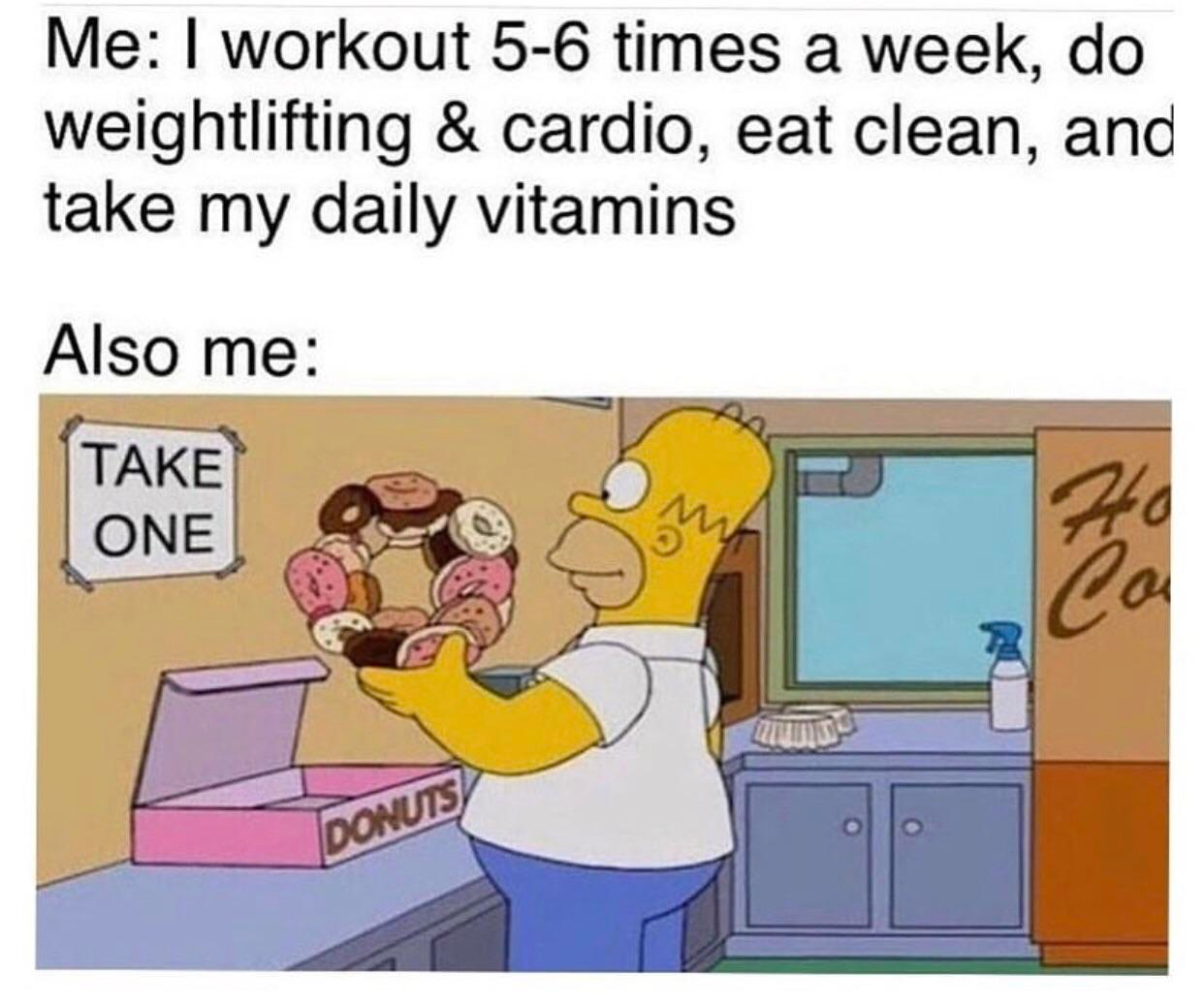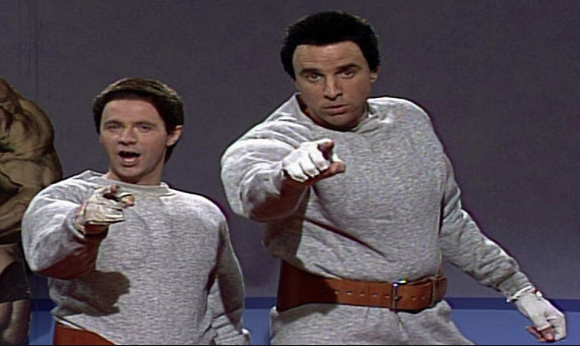Subsections of Nutrition
Start Imperfectly
We must undergo a hard winter training and not rush into things for which we haven’t prepared. – Epictetus
Welcome to the first day of the challenge!
Today’s topic is how to get everything together to crush this challenge. Here’s a list of things you’ll need:
- Nothing
It’s not a typo; you don’t need a single thing to crush this challenge. We all have reasons why this isn’t a good time to start. I don’t even need to list the reasons because I know you’re mentally rehearsing them as you read this.
Focus on these words for just a minute. Things will never be perfect; start anyway. The next 45 days will pass regardless.
We can’t do this life thing halfheartedly. There’s no time off. There aren’t even weekends. We are always preparing for what life might throw at us– and when it does, we’re ready and don’t stop until we’ve handled it. – Ryan Holiday, The Daily Stoic
Commit to completing today’s tasks and nothing more. Don’t worry about yesterday. Don’t fret about tomorrow. Focus on today because, in reality, that’s all you have. Once those tasks are done, you’ve won the day. The rest of the day is yours to do as you wish, and you can enjoy it knowing you’ve made progress on taking care of yourself in all the critical areas of your life. You did this for you.
Take one step
Rather than allowing yourself to get overwhelmed and not do anything, take one step.
A journey of 1,000 miles begins with the first step. —Unknown
The great thing is it doesn’t matter what that step is:
- Increase your daily protein intake
- Restrict eating to only 8 hours per day (intermittent fasting)
- Logging your food in My Fitness Pal or a spreadsheet
- Planning your meals each day in advance
You don’t have to have the perfect plan to get started
We often fail to begin a journey because we don’t feel we have all the answers.
Start anyway
Perhaps you really like breakfast but have read that intermittent fasting works best if you delay your first meal as long as possible.
Fine.
Have breakfast.
It doesn’t have to be a perfect plan, but start if it’s better than what you’re doing now. Measure and adjust as needed.
Today’s tasks
Here are your tasks for the day:
- Drink 1 gallon of water
- Workout for 45 minutes
- Read ten pages from your book Once those tasks are done, go to this website and check them off. Remember, the website will be locked at the end of the day, so be sure to complete this before bed.
How to measure success
I hear what you’re saying: ” How do I know if this is working?!?!” After all, you’ve got to see the success of this plan, or you aren’t going to stick with it.
First of all, throw away your scale.
Ok, you don’t really have to throw it away. It’s an essential tool. But, if this is
- your first real effort to control your health, fitness, and nutrition without going on a diet
- a dramatic change from your previous eating habits (hint: it is)
Give your scale a break.
Let’s call your weight out for what it is:
weight: (n) the force acting on an object due to gravity
So if you need detailed, daily calculations related to the effects of gravity, by all means, use your scale daily. For everyone else:
Your body will need some time to accept that things are changing!
You may not see a significant decrease in weight right away, but rest assured, changes are happening to your body. It’s learning to live on less carbs. It’s learning to use protein as fuel. It’s learning to turn fat into fuel. Let it have some time to adjust before stepping back on that scale.
Fix your belt!
What? What happened to this belt? Actually, nothing. As your body starts to become a lean, mean, calorie-burning machine, your body composition will change. Clothes will start to become baggy. You’re going to have to cinch up that belt a notch. In due time, you’ll probably have to go shopping for a whole new wardrobe (I know, I know… it’s the price to pay for being sexy!).
So long afternoon crash!
Look for other signs of success, like that dreaded afternoon crash you used to get. You know, the one that had you heading to Starbucks for your afternoon caffeine fix? You’ll see it disappear. When you fuel your body right, you’ll have plenty of energy to power through the day without needing caffeine, 5-hour energy drinks, or other energy supplements to stay awake all day.
Restful sleep
Your body is meant to sleep and sleep well. You’ll find that sleep comes naturally once you stop pumping it full of junk food. It’s deep and restful. It’s refreshing.
But what if…
So when should you expect to see these miracles of nature? The first week may be rough. The second week should be better. Give it the full 45 days to start seeing the effects above. If you don’t see results after that don’t quit. Adjust. Identify what isn’t working. Are you hitting your macro ratio consistently? If not, fix that! Are you hungry all the time? Try increasing your protein (and remember to adjust your carbs and fat to balance everything out). Are you hungry earlier or later in the day? Try shortening your fasting window to allow more time to eat during the day.
When can I get back on the scale?
At the end of the challenge. No sooner. The only reason to step back on a scale during this challenge is to satisfy that urge to berate yourself for a perceived lack of progress mentally. If you are feeling great, your clothes are getting baggy, you are sleeping better, and you feel the need to find something negative to beat yourself up over, then jump on that scale.
A more accurate number…
Weight alone doesn’t give an accurate picture of your health. To get a complete picture, you must evaluate weight, body mass index (BMI), and body fat percentage. We’ve already established that weight is the pull of gravity on your body. But what makes up that weight? Is it fat? Water? Muscle? Did Aliens leave a large, heavy object in your body during your last abduction? 🤷♂️ The answer to that question lies in the other two numbers. BMI is a measure of body fat based on height and weight. It is used as an indicator of your health status and disease risk. It doesn’t tell you how much of your body is muscle mass and tissue vs. fat but it has a lot of research behind it to determine your health risk.
BMI categories are as follows:
Underweight <= 18.5
Normal 18.5 - 25
Overweight 25 - 30
Obese 30 and over
Body fat percentage is a measure of fitness level because it is the only body measurement that calculates body composition without regard to height and weight. I.e., “how much of your body is fat vs. muscle.” Even if your weight isn’t changing, you can see big swings in this number as you lose fat and add muscle, and this is precisely why we avoid the scale daily or weekly. This number changes slowly, but change is good.
Essential fat: Women 10 - 13%, Men 2 - 5%
Athletic: Women 14 - 20%, Men 6 - 13%
Fitness: Women 21 - 24%, Men 14 - 17%
Average: Women 25 - 31%, Men 18 - 24%
Obese: Women >32%, Men >25%
To learn about the different methods for calculating BMI and Body Fat Percentage, including how you can calculate it yourself, see: Body Mass Index and Body Fat Percentage
Today’s Tasks
Don’t forget to complete today’s tasks for the challenge.
- Drink 1 gallon of water
- Workout for 45 minutes
- Read ten pages from your book Once completed, be sure to head over to the tracking site and mark them as completed to track your progress for the challenge.
Calories, macros, and why they matter
Brace yourself; today’s topic is a long one with a ton of information in it. It’s good stuff to know, so spending 10 minutes reading this can change how you think about food and nutrition for the rest of your life.
Definition of a Calorie
calorie (noun) The energy needed to raise the temperature of 1 gram of water by 1 degree Celsius
Well, we got that out of the way! SCIENCE!
No more to say, right? It’s obvious what a calorie is and how/why it’s used to measure your food intake.
Ok, maybe not…
Let’s elaborate a bit.
A calorie is the amount of energy required to raise 1 gram of water by 1 degree. Think of it this way:
You have one gram of water. How much gasoline would you need to light on fire to raise the water temperature by one degree?
Not much, right? This is why food is actually measured in kilocalories or kcal, abbreviated as C even though we still refer to it as a calorie. Science, right?
Your body requires energy to function. You get this energy from food, which in turn gets broken down into the components your body can convert into energy. I won’t go much deeper than that- it’s irrelevant. Just trust me when I say ” You eat food. That food turns to energy.” To have a conversation with someone about how much energy they are consuming (i.e., food) vs. how much energy they are using, we need a standard of measure. It’s the Calorie.
An eight oz. steak has roughly 600 Calories (It actually varies, depending on the quality and cut of the steak, but you get the idea.). Using our definition of a calorie, that’s enough energy to raise 600,000 grams (158 gallons) of water by 1 degree. That’s a lot of energy! Now think about this: you eat much more than a single eight oz. steak daily: that indicates how much energy your body needs to function.
Your body needs energy for many things:
- Your heart burns energy to keep the blood pumping
- Your lungs burn energy to pull oxygen from the air you breathe into the bloodstream
- Your muscles use energy to move
- Your brain burns energy to control the body and for thinking
- Even the process of breaking food into energy requires energy
Here’s a pivotal point to understand: when you put more energy into your body (by eating more food) than your body burns as energy, it gets stored as fat! Mystery solved, eat fewer calories, right? Not so fast, Sherlock.
Think back to our definition of a calorie: the amount of energy required to raise water temperature. Now consider the different ways we can do this: To help illustrate the point, let’s consider raising the temperature of a bucket of water. Now let’s pour gasoline underneath our bucket and toss a match on it. What happened? If you’re like me, you’ve already done this experiment many times as a kid, and you know the gasoline went up in flames immediately (luckily, before your parents discovered your little experiment). But what happened to our water? Not much, right? The gasoline burned too fast to impact the bucket of water.
So what if we used a nice, solid hunk of wood? If we get that hunk of wood burning (a hunka hunka burnin’ wood, as Elvis would say), it will burn for a long time. Long enough to raise the temperature of the water in the bucket above it.
We used the same amount of energy in both examples, but one had the desired effect, and one did not.
Let me bring this home to you and your goal now:
The same is true for the types of energy you put into your body.
Carbs = gasoline Fats and protein = wood
When we eat carbs, we get a big gasoline-style explosion. But if equal energy demand isn’t present in our body, those carbs get stored as fat. When we fill up on healthy fats and proteins (you’ll learn what those are later), we get a nice, slow-burning furnace to fuel the engine of our body.
For this reason alone, the source of your calories is more important than the number of calories you consume!
There’s another factor at play here too, and it concerns our body’s chemistry. When we eat, we get a big surge of energy. When this energy starts to fade, our body receives a signal that energy levels are going down. We interpret this as hunger.
So we eat again.
Suppose we’re using gasoline as our fuel source (i.e., carbs). In that case, we continuously pour gasoline into our bodies to keep the energy levels high, even though we didn’t do anything productive with the gasoline in the first place.
So now I hope you can see that where your food energy comes from can impact your energy levels and weight loss efforts. But what to do? The answer lies in balancing carbs, fats, and proteins, and that is where we head next.
Definition of a Macro
Macronutrient (noun) a substance required in relatively large amounts by living organisms, in particular
- a type of food (e.g., fat, protein, carbohydrate) required in large quantities in the human diet
- a chemical element (e.g., potassium, magnesium, calcium) required in large amounts for plant growth and development
Assuming that you aren’t a plant, we can ignore the last part of that definition and focus on the part relating to humans. Our foods are categorized into different macronutrients: carbs, fats, and proteins. This categorization is based on how the food is broken down and used by your body. We’ll dig into that in a minute. The critical thing to know about them is that we need all three macronutrients in our diet, and we need them in the right amounts to meet our energy requirements. Almost all food contains some amount of all three macronutrients. We categorize each food by its primary macronutrient. A potato, for example, has 70g of carbs, 7g of protein, and 2g of fat. Since the primary macronutrient is carbs, it’s considered a carb source. Review the three macronutrients and learn how and why they are essential.
Proteins
Proteins are made of amino acids, commonly called the ” building blocks of the body”. There are 20 amino acids in your body, nine of which cannot be manufactured by your body. The only way to get them is to eat them, thus, protein to the rescue. Protein helps form and maintain muscle mass and provides energy for our muscles and brain. Protein is considered especially important for its role in building lean muscle mass and is known for its satiety effect, meaning when you eat protein, you feel fuller and longer. This is primarily due to the amount of time it takes to break protein down in your body and turn it into energy (think of our hunk of wood from above). The part you likely care about is that it suppresses your appetite. You’ll find many different recommendations on the amount of protein needed daily. Most answers range from .7 - 1 g of protein per pound of body weight. That should be sufficient unless you are specifically focused on bulking up and gaining muscle. Rather than debate the merits of varying protein quantities, we will let our macro ratio determine the amount. You’ll learn how to do that tomorrow.
Sources of protein include meat, fish, dairy, and some beans.
Fats
Those of us who grew up more than a decade (or two) ago were taught that fat was the evil enemy. The root cause of your weight loss struggles. The Homer Simpson to your Frank Grimes.
Nothing could be further from the truth.
Not all fats are created equal. Deep-fried foods, vegetable oils, and highly refined fats known as trans fats (found in margarine, vegetable shortening, baked goods, and processed snack foods) are indeed the enemy. Healthy fats, such as avocados, nuts, fish, and meat, are essential to providing energy, making you feel full after eating and regulating body functions. Healthy fats regulate hormone production. They help you control your body temperature. Fats are required for absorption of fat-soluble vitamins (like Vitamin D). Fat is also the primary energy source for your most valuable asset: your brain! When adopting a low-carb diet, fats are crucial in ensuring you get enough calories in your diet and minimizing the effects of feeling hungry (because they don’t come with the sugar high, followed by the sugar crash associated with carbs).
Eating fat does not make you fat
Contrary to our knowledge in decades past, eating healthy fats does not raise your cholesterol levels; it’s just the opposite. A diet comprised of healthy fats can help increase levels of “good” cholesterol (HDL) while lowering “bad” cholesterol (LDL).
Carbs
Carbs are the tricky part of this equation, so let me preface this section:
You will never struggle to get your daily requirement of carbs.
Seriously, they are in everything. But before we banish them to Mordor alongside Frodo’s ring, let’s put them in perspective. Carbs are broken down into glucose, which can easily be used for energy (think of them like starting a fire with gasoline) or, if you don’t currently need them- they are stored in the body for fat. (Notice that? Fat isn’t stored in your body as fat; carbs are!) Carbs are the body’s #1 source of energy. But don’t mistake that statement: it’s not a free reign to pound away some sugary snack just because you worked out this morning at the gym.
Let me bust a few more myths (that I learned the hard way) while we’re here:
- You don’t need to replenish your carb stores after hitting the gym.
- You don’t need to carb load for a 5k tomorrow (or a 10k, or a marathon).
- You don’t need to search for carbs to get fiber in your diet.
- Net carbs are marketing tactics.
If you follow the methods laid out here, I promise you will get plenty of carbs in your diet, and while you won’t be eating whole-grain pop-tarts, you won’t miss them either.
Why Macros Matter
Cool story, bro. Who cares?
Most people focus on a specific calorie goal and expect unrealistic results. The truth is, where your calories come from is more important than the number. You’ll soon see how focusing on macros makes calorie counting irrelevant or necessary, with the added bonus of feeling better and hitting your goals.
Let’s start with an example:
Say your daily calorie intake should be 1,500 calories. You measure against this number, hoping to lose weight and body fat, without regard for where the calories come from.
Meal Plan #1
1 Milky Way Candy Bar (240C)
1 Vanilla Pudding Cup (240C)
1 Bag of M&Ms (240C)
1 Quarter Pounder with Cheese (520C)
1 20 oz. Pepsi (250C)
Total: 1,490 calories
Meal Plan #2
1 6 oz. Chicken Breast (335C)
2 T Hummus (70C)
1 C Cottage Cheese (200C)
Salad with spinach, bell peppers, tomatoes, and balsamic dressing (250C)
1 C Greek Yogurt (220C)
1/4 C Dark Chocolate Granola (170C)
1 Protein Shake (250C)
Total: 1,495 calories
Both meal plans hit your daily calorie intake goals. After 30 days of this plan, which plan do you think is likely to produce results? Hopefully you see the flaws in sticking to Meal Plan #1.
Let’s break it down to understand why.
Meal Plan #1 has the correct amount of calories, but it’s loaded with sugar. Eating this meal leaves you full but generates a massive spike in your blood sugar levels. An hour later, your blood sugar levels will start to decrease, signaling to your brain that you need to eat to replenish your depleting energy level. You’ll never be able to eat only this in a given day. You’ll be hungry and irritable and go in search of more food. As a result, you’ll overeat your daily caloric requirements (not to mention the severe lack of vitamins and nutrients in this meal plan).
Meal Plan #2 has the same number of calories but with huge differences in the way your body will respond. The chicken provides protein, which will be used by your body to repair damaged muscle fibers and build new muscle. It’s slower to digest, so you’ll feel fuller and more satisfied for longer. The same is true for the cottage cheese and protein shake (sort of). The Greek yogurt brings a mix of carbs, fat, and protein. The carbs will provide quick, accessible energy. The fat will be broken down slowly, preventing hunger from striking for hours. The salad provides fiber, vitamins, and nutrients, and the dressing is another source of fat for your energy reserves. I can promise you, after eating this throughout the day, you will not be hungry. In addition to not being hungry, you will provide your body with plenty of protein, fats, and carbs to maintain a healthy lifestyle that promotes sensible eating and sustained weight management.
Using these meal plans as an example (combined with what you’ll learn tomorrow), it becomes clearer that not all calories are created equal. The source of the calories becomes more critical than the actual number of calories.
There is some hidden magic here, too. By choosing our source of calories, we can manipulate how our body responds. Take a look at this:
- Protein: 4 calories per gram
- Carbs: 4 calories per gram
- Fats: 9 calories per gram
Remember that carbs are like gasoline to a fire: it burns quickly and is gone. Protein and fats require much more energy to break down. That means that our digestive system is busy working for longer, leading our brain to believe that there must be plenty of energy available (after all, those guys down in the GI Tract are still working hard). By stacking our diet in favor of protein and fats, we can provide our body with the same amount of calories but at a much more controlled burn rate. So, we can hit our 1,500-calorie goal with 375 g of carbs, 375 g of protein, or 167 g of fats with significantly different results on our bodies.
The exact ratio of carbs, fats, and protein matters, and knowing how much of each you need is precisely what we’ll cover next.
Today’s Tasks
Don’t forget to complete today’s tasks for the challenge.
- Drink 1 gallon of water
- Workout for 45 minutes
- Read ten pages from your book Once completed, be sure to head over to the tracking site and mark them as completed to track your progress for the challenge.
How Many Calories Should I Eat?
Now that we know what calories and macros are, and the role they play in healthy eating, the next question becomes “how many should I be eating?” There is a lot of misinformation on this topic, but we can come up with some sensible guidelines. The important thing to remember is that the answer doesn’t really matter. You make an educated guess, try it, and adjust. Because you are tracking and measuring, the right answer reveals itself to you.
To get your starting number, use the Mayo Clinic calorie calculator. There are many similar websites out there, I like this one because sites like the Mayo Clinic use evidence-based research in their published articles. Other sites can and will skew these numbers to align with the marketing of the product they are trying to sell you. (Pro-tip: in the health and fitness industry, always ask yourself what the person providing the information is trying to sell you.)
Lean Muscle Mass and BMI
Next, you need to determine your nutrition goal: build muscle? maintain? lose fat? You can only pick one. If you try to juggle more than one, you will sabotage your efforts. You may have some initial thoughts on which one, but I recommend letting your body tell you. To do that, you need to know your Body Fat Percentage.
If you know your BMI, you can approximate your body fat percentage with the following formula:
(1.39 x BMI) + (0.16 x age) - (10.34 x gender) - 9 gender: 0 for female, 1 for male
If you don’t know your BMI, you can approximate your body fat percentage by entering your measurements here.
So now you’ve got a number. What to do with it? If your number is greater than 30 (for women) or 24 (for men), I strongly recommend your priority is fat loss. Subtract 10% from the calorie intake you calculated above to create a calorie deficit, and stick with that until you are down to 20% (women) or 13% (men). Now let’s figure out what those calories should be made of…
Macro Profiles
Yesterday, you learned not all calories are created equal. Let’s talk about macro profiles, why they are essential, and how they provide a better way of managing your goals. This is true regardless of your goals. It works for weight loss. It works for muscle gain. It works for maintenance.
Let’s start by defining what a macro profile is.
It’s the ratio of carbs:protein: fats that make up your diet. For example, a macro profile might say that 30% of your calories come from carbs. Another 40% comes from protein, and the remaining 30% comes from fats. Notice that I didn’t mention how many calories you need! This is a ratio, so it’s going to work the same whether you need 1,500 calories per day or 2,500.
Here’s where the magic happens (along with a little math):
Assume that you’re daily calorie intake is 2,000 calories(fn) and you are using the 30/40/30 carbs/protein/fat macro profile.
Using a little math, we can multiply 2000 x 30% to learn that we need 600 calories per day from carbs, 800 calories per day from protein (because 2000 x 40% = 800) and 600 calories from fat (because 2000 x 30% = 600).
We can validate our math: 600 calories from carbs + 800 calories from protein + 600 calories from fat = 2000 calories
Now we need one more piece of information to make this work:
Carbs contain four calories per gram.
Six hundred calories divided by four calories per gram equals 150 grams of carbs daily.
Protein contains four calories per gram.
Eight hundred calories divided by four calories per gram equals 200 grams of protein daily.
Fat contains nine calories per gram.
Six hundred calories divided by nine calories per gram equals 67 grams of fat daily.
So all of the information above can be distilled to:
150 g carbs
200 g protein
67 g fats
With those three numbers, you never have to count another calorie again. Eating 150g of carbs, 200g of protein, and 67g of fats can never add up to anything besides 2,000 calories.
What makes this so incredibly important is you are now controlling the source of your calories, not just the number. This means you won’t binge on 2,000 calories of carbs and alcohol and sabotage your goals!
The 30/40/30 ratio mentioned above is one example of a macronutrient ratio. There are other popular ones as well. The right macro ratio for you depends. No one can tell you what it is.
I’m going to take a side note for a minute here. Consider this our heart-to-heart conversation. I’m going to be brutally honest. It may not be the most pleasing news, but you need to hear it from someone, and since you’re reading this, that someone gets to be me.
You are going to have to choose your macro ratio. No one else can choose it for you: you have to own this. If you let someone else choose it for you, it’s still your choice to accept their answer and you own the consequences.
If you choose not to decide, you still have made a choice. Rush, Freewill
You may choose the wrong answer the first time. That’s ok. When you decide it’s not right for you based on measured results, you are not going to throw your hands in the air and give up. You will make a new choice and measure the results. If the results aren’t what you want, you’ll choose again and measure the results. And you will keep repeating this process until you get it right. Many people are going to try and convince you they have the answer. Their fail-proof diet/plan/formula/technique or whatever is the hope and salvation you’ve been looking for. When these people appear, they are trying to sell you something.
You must own this because you are the only “you” you’ve got!
Ok. That’s over. I feel better.
Back to macro profiles: a lot of it concerns your body type, which your ancestry may significantly impact. This website does a really great job of breaking it down. It’s essential when looking at the chart to look at who you really are not who you wish you were.
The three common ratios shown there are:
55/25/20 (carbs/protein/fat): Ectomorph- people with long, skinny limbs who are naturally thinner.
40/30/30 (carbs/protein/fat): Mesomorph- typically identified as naturally muscular and athletic individuals.
25/35/40 (carbs/protein/fat): Endomorph- naturally broad and thick individuals
Some other common ratios include:
50/30/20 (carbs/protein/fat): This one is called “moderate,” but seriously, that’s a lot of carbs.
40/30/30 (carbs/protein/fat): Also seen above, this can sometimes be called the Zone Diet.
25/45/30 (carbs/protein/fat): This ratio is known as low carb. It’s interesting to point out that many low-carb fads and diets fail to hit this ratio.
10/15/75 (carbs/protein/fat): This is the Keto (or Ketogenic) ratio. You may have heard the term “keto" before. As you can see, it uses an extremely high-fat content to force the body into generating its ketones for energy. This is extremely interesting and has shown some pretty impressive results for cancer patients, but this is not to be taken lightly. This is tough to follow, and the penalties are harsh for “cheat days.” Unless you have successfully followed a macro-profile-based meal plan before, I do not recommend this without the supervision and guidance of a professional, licensed nutritionist.
We covered a lot, so I want to highlight the takeaways.
- Counting macros frees you from counting calories while providing your body with the “stuff” you need to mold it how you want it.
- Hitting your macros guarantees you won’t exceed your calorie goals, so there is no point in counting calories.
- The correct macro ratio may require some trial and error on your part but even guessing wrong is going to put you closer to your goal than you are now. Tomorrow we’ll look at different meal plans and learn some ways to evaluate which meal plan is right for you, but for now:
Today’s Tasks
Don’t forget to complete today’s tasks for the challenge.
- Drink 1 gallon of water
- Workout for 45 minutes
- Read ten pages from your book Once completed, be sure to head over to the tracking site and mark them as completed to track your progress for the challenge.
Choosing A Meal Plan
Paleo, vegan, whole food, keto, Mediterranean, the list goes on. Which one should you choose? There are so many options; getting started’s almost too overwhelming.
Here’s the magic secret no one wants you to know: you don’t have to choose.
Most popular meal plans today are based on marketing, not science. They are all pimped by marketers flaunting amazing before and after pictures, testimonials of people who have turned their lives around and avoided certain death, and pseudo-scientific facts about why this plan is better than the “others.” Somebody queue Tiny Tim; it’s time for his tear-jerking miracle scene. I’ll be over in the corner vomiting.
It’s a miracle; God bless us, everyone!
The truth is: if your “diet” before consisted of 1200-calorie Chipotle burrito bowls, craft beer, and meal replacement shakes, any sensible change is going to produce dramatic results. It’s not because you found the one diet; it’s because you stopped eating like shit.
If you do nothing else…
Fill your plate with foods that closely resemble the plant or animal it came from. (I see you reaching for those marshmallow peeps and chocolate bunnies. Let’s get a little closer than that, m’kay?) Minimize processed foods, and don’t drink your calories.
It’s ok if you want to follow one of those meal plans. I have, and on occasion, still do. They are a great way to get ideas for new recipes and minimize information overload for eating. Understand meal plans for what they are: a recipe collection, not a holy grail to healthy eating. Below, I’ll list some of the popular plans, and if one sounds like something you’d like to try, by all means, go for it. One word of caution: regardless of what the “experts” tell you, count and follow your macros. Marketing sells, but science works.
Paleo
The Paleolithic diet, also known as the Paleo diet, caveman diet, or stone-age diet, consists of foods thought to mirror those eaten by our Paleolithic-era ancestors. It primarily consists of eating meat, fruits, vegetables, nuts, and seeds. The overarching principle is ” If a caveman would eat it, so can I”. I’ve not seen any scientific evidence on the impact of leaving a cheesecake in a caveman’s dwelling. 🤷♂️
Whole 30
The Whole30 diet is similar to paleo but more restrictive. In addition to eliminating sugar, alcohol, grains, legumes, soy, and dairy, Whole30 eliminates natural sweeteners like honey or maple syrup. One benefit of Whole30 is the comprehensive list of foods you can eat. With Paleo, some foods are hotly debated regarding their availability or consumption by actual cavemen. On Whole30, the authors provide a list of foods; nothing else qualifies.
Mediterranean
The Mediterranean diet is inspired by the eating habits of Spain, Italy, and Greece in the 1960s. The principal aspects include olive oil, legumes, fruits, vegetables, fish, cheese, yogurt, and wine.
Keto
The keto or ketogenic diet has been increasingly popular lately. Keto is a high-fat, adequate-protein, low-carb diet that forces the body to burn fats rather than carbs as fuel. Its primary use is for its therapeutic effects in patients with neurological disorders, cancer, and obesity. Let’s be very clear: most people claiming to be on the keto diet are doing low-carb (see below). The critical difference is measuring. The word “keto” actually comes from the word “ketosis,” describing the state the body is in when the liver starts producing ketones, which are then used by the body as fuel. Counting macros is critical to maintaining the keto diet. Failure to track the macro ratio will result in your body falling out of ketosis, thus not producing the desired results. For those on the keto diet for medical reasons, this may include death. Carb selection is also critical. With carbs restricted to low levels, it’s essential that every carb you eat contains the most vitamins and nutrients possible to avoid the effects of malnutrition.
Low Carb
The error-friendly version of Keto, also known as Atkins. Foods high in carbs are restricted and replaced with more fat and protein foods. Typically, this means eliminating sugar and grains from the diet. This diet is actually straightforward to follow, and easy to get your daily intake of vitamins and minerals from fruits and vegetables.
Wrapping Up
Those are just a few of the thousands of diets available. Here’s the thing I want you to take away: you don’t have to choose any of them. If one looks like something you’d like to try, by all means, do so. Measure your protein, fat, and carb intake to avoid overeating and sabotaging your goals. If you decide you don’t like it, switch. As long as you stick to your macro ratio, you can choose any or all of these because you are only changing what foods constitute the source of your macros.
Today’s Tasks
Don’t forget to complete today’s tasks for the challenge.
- Drink 1 gallon of water
- Workout for 45 minutes
- Read ten pages from your book Once completed, be sure to head over to the tracking site and mark them as completed to track your progress for the challenge. Tomorrow we’ll talk more about the source of our macros when we address What should I eat?
What Should I Eat?
I can hear some of you already; “What?!?! What am I supposed to eat? Do you expect me to eat the same thing every day?!?!?”
Well, yeah…
But hear me out first: you already do.
For a vast majority of us, we eat the same thing over and over: a chicken, a cow, a pig, a fish. I’m willing to bet there is a similar pattern in your selection of fruits and vegetables, too. Ewww. Kale is gross; I’m not eating that. So you stick with iceberg or romaine lettuce, and the only time you switch is when your preferred leafy, green salad staple is currently contaminated with an ecoli outbreak.
It’s not the food; it’s the seasoning
It’s not the chicken that provides variety; it’s the seasoning. Some days you have it with spicy seasoning. Some days it is simmered in a broth. Some days it is dredged in salt and pepper and fired up on the grill. Some days it is scrambled or cooked over-easy. It’s still a 🐓.
So, if we can agree that you already eat the same thing day after day, but seasoned differently, let’s work with that. According to your macros, how much chicken (beef, pork, or tofu) do you need to meet your intake? Find that number. For the sake of conversation, let’s say it’s 10 oz. You know, if you are eating chicken today as your protein, you need 10 oz of it. What you do to that 10 oz is entirely up to you. Grill it, bake it, stew it, slather it in peppers, or whatever makes you happy.
This is the key to sticking with your nutrition plan long term. Change your mental attitude: food should not be the source of variety in your life. It’s the people with you when you eat. The environment. The situation. Add mixture to other areas of your life: learn to play an instrument, launch a YouTube channel, go to the grocery store without a mask, and make friends with trashy people you can’t introduce to your other friends.
Today’s Tasks
Don’t forget to complete today’s tasks for the challenge.
- Drink 1 gallon of water
- Workout for 45 minutes
- Read ten pages from your book Once completed, be sure to head over to the tracking site and mark them as completed to track your progress for the challenge. Tomorrow we will combine everything we’ve learned to create your meal plan. We’re not done talking about nutrition yet, though; just implementing what we’ve learned so far.
Create Your Meal Plan
We’ve spent the last week learning about the fundamentals of nutrition: calories, macros, calorie intake, and meal plans. Now it’s time to take action. Today you are going to create your meal plan. Once created, this is the meal plan you will follow for the remainder of the challenge.
Tips
Take some time this morning to decide what meal plan (paleo, whole30, etc.) you will follow, if any. Remember: you have all the knowledge you need to create your own meal plan just by calculating and following your macros.
Plan out a full day of meals that fit that plan. Now look at that day and see how many components of it can be reused.
Consider making a double-sized portion of some meals, and use the extra as a lunch or dinner the next day.
How many items on your list can be changed for variety without adjusting the quantity? I.e., take the 6 oz chicken breast for dinner: use sugar-free BBQ sauce one night, grill a second night, and slice into a garden salad a 3rd night. It’s the exact macros every time but used differently to prevent boredom.
Plan as many meals in advance as possible. This minimizes on-the-fly decisions (which always turn out bad).
Meal-prepping is your friend. Use weekends or days off to cook ahead of time so when meal time comes during the week, and you’re one step ahead of the game with fresh, ready-to-eat meals already prepared that support your nutritional goals.
Today’s Tasks
Don’t forget to complete today’s tasks for the challenge. Today we add a new task to your list: sticking to your meal plan.
- Drink 1 gallon of water
- Workout for 45 minutes
- Read 10 pages from your book
- Stick to your meal plan Once completed, be sure to head over to the tracking site and mark them as completed to track your progress for the challenge. Tomorrow we’ll learn about using tools like MyFitnessPal to track your macros and creating recipes to make tracking easier.
Using MyFitnessPal
If you don’t measure it, you can’t change it. While valid for most areas of life, today we will discuss its significance in changing your nutritional intake.
If you haven’t already done so, download and install the MyFitnessPal app for your device. It doesn’t matter if you are using Android or iOS. The screens may differ in layout, but the functionality is the same. Create a user account and sign in. There is no need to upgrade to the paid plan; everything I show you in this chapter will be done using the free plan. (There are some really nice features in the paid version, but for now, let’s master the basics).
When you open the app, you will click the button on the bottom that says “Diary.”
Doing so will open your daily food log, which happens to be entirely blank at this point.
Let’s add some food to it. I’m going to add my dinner from last night as an example. When you hit the button for additional food, it shows a list of things you’ve recently added. This means the more you use the app, the easier it will become. My favorite feature is the “multi-add” button. Clicking it allows me to check the items I’ve eaten recently and add them.
If you are just getting started with MyFitnessPal, your “Recently eaten” items will be blank. You have two options to fix that:
- type in the search box, find the item you are looking for, and add it
- Scan the barcode
Option #2 is much simpler, and when you start looking, you’ll be amazed at how much of the food you eat has a barcode. The great thing about using the barcode is that it adds the exact brand you are eating. This makes your results more accurate as foods vary from brand to brand.
To use the barcode scanner, click the barcode icon in the app:
Then find the barcode on your food and scan away!
If all goes well, MyFitnessPal will load the nutritional details for your scanned item. You can adjust the quantity and serving size, then save it to your food diary.
Over the last week, we’ve been doing a lot of math. We’ve calculated macros, calories, and ratios. Now, using MyFitnessPal, I can let my phone do all the work!
You’ll notice in the macro screenshot that I’ve even told MyFitnessPal about my macro ratios. As a result, MyFitnessPal shows me how close I am to my targets. In the paid version of the app, you can access even more detailed information and alerts.
Combining Foods into Recipes, Recipes into Meals, and Meals into a Daily Food Log
Now that we know how to add individual food items to our diary in MyFitnessPal, it’s time to build upon that knowledge. For what it’s worth, you’ll notice that I do that often:
- learn a new skill
- learn another skill
- bundle those skills into one task
I learned a technique known as Stacking from Tony Robbins. You use it all the time, and you may not realize it. Think about when you first learned to drive: You had to master the gas pedal. Then you had to figure out how the brake worked. Before long, you needed turn signals (though some appear to have forgotten this tidbit of learning). After a while, you learned to do those all with little effort, in addition to working the heater, a/c, radio, and other accessories. Now you refer to all those individual tasks as driving and rarely consider the individual steps of the overall task.
We’re doing the same thing with eating. You are learning to:
- choose foods
- identify the macros
- adjust quantities to meet your macro ratio
- combine foods to make a meal
- combine meals into a daily food plan
Over time, these skills will become as natural to you as slipping into the driver’s seat and heading to the corner store, with the bonus of eating healthier, feeling better, and nailing those fitness goals!
Saving Ingredients as Meals
Let’s add a sample meal. We’ll convert some individual items into a meal in MyFitnessPal. Suppose you had a dinner consisting of grilled chicken breast, rice, and a side of red grapes.
We’ll start by adding the chicken breast.
Next, we’ll add 3/4 cup of rice.
Finally, we’ll add the red grapes.
Now we can hit the menu option and select “Save Meal” to save all the ingredients as a meal. Anytime you eat that meal, you can add it to your food log in one step by choosing “Recipes” and “Log it”. #done
Create Meal Plans from Your Recipes
Take some time and enter some of your favorite recipes. Once you’ve done that, log them into MyFitnessPal and see how they stack up.
Do they combine together to hit your goals for macros?
On your first attempt, they most likely won’t. That’s ok, and I’ll show you how to adjust. Let’s assume you entered the following:
Your daily goals are 1200 calories: 30% carbs, 40% protein, and 30% fat ratio. Let’s see how this stacks up.
106 g carbs * 4 calories per gram = 424 calories
146 g protein * 4 calories per gram = 584 calories
61 g fat * 9 calories per gram = 549 calories
424 + 584 + 549 = 1557, so we're over on calories.
Let’s see what our macro ratio is. This will suggest to us the best place to cut back.
424 / 1200 = .35, or 35% for carbs
584 / 1200 = .49 or 49% for protein
549 / 1200 = .46 or 46% for fat
Adjusting Our Meal Plan
We’ve exceeded our macro ratio by 5% in carbs, 9% in protein, and 16% in fat. Using this information and the knowledge that fat has more calories per gram than carbs or protein, let’s look at our proposed meal plan. Carbs and protein both have four calories per gram. In a 1200-calorie meal plan, we can do a little math to learn that 5% of 1200 is 60 calories:
1200 * .05 = 60
So 60 calories from carbs or protein are 5% of our meal plan. Knowing that Each gram of carbs or protein is four calories, we can determine that 15 grams of carbs or protein produce a 5% change in our macros:
60 calories / 4 calories per gram = 15 grams
Since we’re over on our carbs by 5%, we now know that reducing our carb intake by 15 grams will bring carbs to our desired ratio.
We’re over on protein by 9%, which is roughly two times 5%. We can make a ballpark estimate to say we need to reduce our protein by 30 grams.
Let’s do the same math for fats. Again, 5% of 1200 calories is still 60 calories. With fat bringing nine calories per gram, we can determine that 6.67 grams of fat results in a 5% change to our meal plan:
60 calories / 9 calories per gram = 6.67 grams
To reduce our fat by 15%, we multiply
6.67 * 3 = 20 grams
So we’ve broken our meal plan into a nice, workable number: 5%. We want to reduce our carbs by 5%, protein by 10%, and fats by 15%. All are multiples of 5, which makes the math easier.
We converted the number “5%” into grams. For carbs and protein, 5% of our daily intake equals 15 grams. For fat, 5% of our daily intake = 6.67 grams.
We want to cut the carbs in our meal plan by 5%, so we need to eliminate 15 grams of carbs.
We want to cut the protein in our meal plan by 10%, so we need to eliminate 30 grams of protein.
We want to cut the fat in our meal plan by 15%, so we need to eliminate 20 grams.
Let’s see where we can do that.
Take a look at that cottage cheese. It has 10 g of carbs, 26 g of protein, and 9 g of fat. Eliminating that takes us a long way toward our goal, leaving only another 5 g of carbs, 4 g of protein, and 11 g of fat to cut.
Let’s focus on that chocolate next. It has 8 g of carbs, 2 g of protein, and 13 g of fat. If we eliminate that, we are now under our goal for carbs by 3 g, over by 2 g on protein, and under our goal for fat by 2 g.
Let’s update our meal plan to get a final number:
We’re now at 1,277 calories with 88 g of carbs, 118 g of protein, and 39 g of fat. We can calculate the calories from our macros:
88 g of carbs * 4 calories per gram = 352 calories
118 g of protein * 4 calories per gram = 472 calories
39 g of fat * 9 calories per gram = 351 calories
And convert that to our ratio:
352 calories from carbs / 1200 calories per day = .29 or 29%
472 calories from protein / 1200 calories per day = .39 or 39%
351 calories from fat / 1200 calories per day = .20 or 29%
You know what? 29% carbs/ 39% protein/ 29% fat is close enough to a 30/40/30 ratio for me!
Note: The astute reader may notice that our calories from macros do not add up to our total calorie count. This is due to calories from sugar alcohols. Some of the foods on our meal plan add calories that aren’t in the form of carbs, fats, or protein (such as the glass of wine). That’s ok. We don’t have to be exact here. I promise that if you follow this plan, you’ll be close enough to start hitting your goals. Sure, you can micro-manage and stress over each individual calorie, but in the long run: it will add much stress to your life for little gain.
Turn Your Meal Plan Into a Shopping Cart
Now that you have a meal plan for a single day, it’s time to expand that into an entire week. As you’ve realized, this is a lot of work. This is the primary reason I eat the same foods frequently. It makes it easier. And before you say ” Ewww, that’s gross, I can’t do that!” Let’s remember: most likely, you are going to the same restaurants, ordering the same thing (whether it be a salad, a wrap, a burger, or a taco). You are already doing this, and you don’t realize it. Make this work for you! Once you have your full week of meals planned, look at what you’ll need, create a list and head to the store! Purchase the ingredients on your shopping list (and nothing else!), then head home and prepare as much of this as possible to set yourself up for success in the week ahead.
Today’s Tasks
Don’t forget to complete today’s tasks for the challenge, including our new task: sticking to your meal plan.
- Drink 1 gallon of water
- Workout for 45 minutes
- Read ten pages from your book
- Stick to your meal plan Once completed, be sure to head over to the tracking site and mark them as completed to track your progress for the challenge. Tomorrow we will be learning about how and when to involve your doctor.
Involving Your Doctor
You mustn’t go on this journey alone. You need a support group, someone to help hold you accountable, and someone to lean on when you have moments of weakness.
If you have medical issues that impact your diet (like cardiovascular disease, kidney disease, autoimmune issues, diabetes, etc..…), running your meal plan past your doctors before taking action is good. For those of you in this category, your doctor has likely given you some suggestions:
- cut back on protein
- limit fiber
- don’t eat lots of fat
While your doctor’s suggestions seem reasonable and prudent for your condition, you may discover they are a bit… vague. For example, how much protein constitutes “cutting back”? How much fiber is considered “limited”? How much fat is “a lot of fat” (not to mention the distinction between healthy and unhealthy fat)?
Here’s where your newly-acquired knowledge comes in:
- Write down what you plan to eat.
- Add up the macros.
- Print it out.
- Take it to your doctor and discuss it with them.
Have a meaningful conversation with your doctor. If he or she has concerns, get specific recommendations from them on what should be changed. This means turning statements like ” I’d like to see you cut back on protein.” into ” I’d like to see you keep your protein under 50g daily and only from lean protein sources like chicken and fish.” Your doctor’s advice must be actionable and measurable. You don’t know what steps to follow if it isn’t actionable. If it isn’t measurable, you won’t know if you follow it correctly.
Word of Warning: Your doctor may be unprepared for this. Many of your doctor’s patients don’t have a plan on how they are going to follow his or her advice. When you show up with a plan, seeking specific guidance and input, your doctor may need some time to evaluate it and offer a quality evaluation. That’s ok. Allow that process to happen, and follow up with them. Finally, seek an alternative if you’re not getting the necessary answers.
Today’s Tasks
Don’t forget to complete today’s tasks for the challenge. Today we add a new task to your list: sticking to your meal plan.
- Drink 1 gallon of water
- Workout for 45 minutes
- Read ten pages from your book
- Stick to your meal plan Once completed, head to the tracking site and mark them as completed to track your progress for the challenge. With our meal planning in full swing, tomorrow we will talk about fasting: how and when to do it.
Intermittent Fasting
The words “intermittent fasting” strike fear into the hearts of many.
Bear with me; it’s not the horrible, dreaded hunger strike you imagine.
Let’s start with the basics:
- For men, it means eating all your daily food in an 8-hour window.
- For women, it means eating all your daily food in a 10-hour window.
- You can pick your eating window. Go with whatever works for your schedule. You should, however, stay consistent from one day to the next.
You’ll be asleep for eight of the remaining hours anyway (What?!?! Who gets 8 hours of sleep?!?!” you say? Hang on, I’ll come back to that). You’ll be at work for at least another 8 hours (plus more if you commute). Guess what? That’s 16 hours committed to other tasks already! The rest of the time is available to eat!
But wait, there’s more! Because the food you are eating follows your macro profile, during that 8 or 10-hour period, you will consume enough calories for the entire 24-hour period. The food is also high in healthy fats and proteins, so you won’t experience a carb crash and be hungry an hour after your feeding window closes.
There is another benefit, too: because you contain your eating to an 8 or 10-hour window, your digestive system can rest. Your entire life, your digestive system has been working hard for you (despite not having the best working conditions). Doesn’t it need a little love and care too?
Putting it into action
Example Schedule #1
Here is what a typical day might look like and how to work your feeding window into it:
5:00 am - Wake up, hit the gym, or get in some early morning work
8:00 am - Official office hours begin. Drink coffee, tea, or water.
11:00 am - Starting to get hungry by now. Drinking a large glass of water helps to take your mind off of it.
12:00 pm - The feeding window opens. This is the first meal. It helps to have something ready to eat because delays in getting food into your belly lead you to make bad choices.
3:00 - 4:00 pm - Sometime during this window, you start getting hungry again. Have another smaller meal or snack, maybe a cup of low-fat cottage cheese and water.
6:00 pm - It’s dinner time! Finish your day with 8-10 oz of grilled chicken breast, a salad made from bell peppers, spinach, balsamic vinaigrette, and a few (4) tablespoons of hummus. This meal is packed with protein and fat, so it will take a long time to digest. This gives you ample runway to close out the feeding window.
7:00 pm - If there’s room left in your meal plan (thanks to hitting the gym earlier in the day), finish off with some dark chocolate
8:00 pm - The feeding window closes, and you are stuffed. You wouldn’t want to eat more if you could!
Example Schedule #2
This schedule is for people who love breakfast. So you start eating a little earlier, and thanks to a 10-hour window, you still have time to have dinner with the family (when everyone else’s schedule aligns, too!).
7:00 am - Shower, dress, and commute to start your day at work. You can have a coffee, Amino Energy or BCAAs to sip on during your commute.
10:30 am - Bacon and eggs at work (thanks to a fantastic technique to cook everything deliciously in the microwave.
12:30 pm - Snack on an apple and some Chicharrónes.
2:30 - This is your largest meal of the day with 4-6 oz of chicken breast either in a mixed green salad with Ranch dressing or accompanied by butternut squash risotto
4:30 is snack time again with homemade granola
6:30 pm - at the gym.
8:00 - Dinner with the family.
Having your food prepped and prepared at the start of the week allows you to avoid extra work cooking and cleaning each night and close your feeding window with a relaxed evening.
You may have noticed the first meal plan includes a lot of dairy. You may get a little worried if you are lactose intolerant or have an aversion to dairy. Relax. Note that the second meal plan contains no dairy. It also uses multiple, smaller meals throughout the day, where the first has 2 or 3. You can create a meal plan that works for you, regardless of your dietary preferences, allergens, or conditions. Yup, that includes you Vegans. And the Vegetarians. And the Paleo crowd. And anyone else I failed to mention!
Look, I know you have a hectic schedule without a lot of free time! That’s what I love about intermittent fasting: it’s controlled, planned, and doesn’t suck more time out of an already busy day. Bonus: your body gets the food it needs, giving you more energy to power through the day.
Oh yeah…
About those 8 hours of sleep: because you spent your time planning your meals and didn’t spend a lot of time cooking due to prepping earlier in the week, and you were productive outside of your eating window: you have a lot of leftover time.
Catch up on that sleep!
Today’s Tasks
Don’t forget to complete today’s tasks for the challenge.
- Drink 1 gallon of water
- Workout for 45 minutes
- Read ten pages from your book
- Stick to your meal plan Once completed, head to the tracking site and mark them as completed to track your progress for the challenge. Tomorrow you’ll be able to earn extra points in the challenge in the first surprise element!
24-Hour Fast
Surprise! Today is the first surprise challenge of the 45-Day Challenge. For one day during the next week, fast for 24 hours. You can pick any day that works for you. I try to pair it with days I’m pretty busy to avoid having a lot of idle time to think about food.
“Set aside a certain number of days, during which you shall be content with the scantiest and cheapest fare, with course and rough dress, saying to yourself, ‘ Is this the condition that I feared?” – Seneca
If you’ve never done a 24-hour fast before, it’s an exciting challenge to try. You will learn that it’s easier than you think, and when you think you are hungry, the feeling passes within a few minutes whether you actually eat or not.
I try to fast for at least 24 hours once per month. There may be some health benefits, but for me, the motivator is discipline: fasting allows me to practice discipline and focus in less-than-ideal circumstances. You never know when you will need this skill and when you need it: it’s too late to learn it. It’s also a gentle reminder that things could be much worse. I’m fasting by choice when many worldwide do so out of necessity.
Here are some things I’ve learned:
- Your gallon of water is your friend: a belly full of water keeps you from feeling hungry
- Carbonated water is a refreshing change up from regular water
- You can still workout with just as much energy and power
- Timing matters: while you can pick any 24 hours, I’ve found it easiest to start after dinner on day one and fast until dinner the next day. This lines the most challenging part of the fast up with the time of day when you have the least opportunity to do anything about it: your workday. The final hours of the challenge are during the end of your workday, and most people don’t have the option to stop working to address it. By the time you do, it’s dinner time anyway.
- Eat your regular meal at the beginning and end of the challenge. There is no need to “stock up” or “replenish” for the fast. Doing so results in you feeling miserable from overeating. Your body has enough fuel stored for three weeks; you’ll make it through the 24 hours just fine. If you have medical concerns, consult your doctor before taking on this challenge. This challenge is optional but highly recommended because of what it teaches you. Once completed, check the box in the tracking sheet and share what you’ve learned.
Today’s Tasks
Don’t forget to complete today’s tasks for the challenge.
- Drink 1 gallon of water
- Workout for 45 minutes
- Read ten pages from your book
- Stick to your meal plan
Once completed, head to the tracking site and mark them as completed to track your progress for the challenge. Tomorrow we will be covering my favorite nutrition topic: CHEAT DAYS!
Cheat Days
Aaaahhh… the much-loved Cheat Day. It’s the chance to throw everything to the wind and live a little. Or is it? As you’re beginning to see, the key here is discipline. You’re right: a cheat day can do wonders for keeping you on track in many areas. It’s a little indulgence that provides a dopamine hit, a sugar spike, and a little freedom from the disciplined grind of creating the “you.” It’s also beneficial for other areas of your life, for example, your community. Grandma takes pride in the recipe for her favorite dessert, given to her by her mother, who received it from her mother. It makes her feel like she can still contribute to the family in her older age, and who are we to deprive her of that memory? Besides, we’ve all been around those people who turn their noses up in disgust at something that doesn’t conform to their chosen “lifestyle of the week.”
The potential problem here is when things drift out of control. You have a slice of Grandma’s tasty dessert, which leads to some chips and salsa, then… “Oh, why not? I’ll have a drink too,” followed by waking up the next morning feeling like shit. You already feel horrible, so some pancakes, bacon, and chocolate milk may help.
Lol, I guess today is shot too…
The next thing you know, it’s four months later.
Defining the barriers
So how can we indulge in some of our favorite foods and drinks without letting things spiral out of control? One way is by defining barriers: for example, one of the challenge rules is no alcohol, except once per week when meeting with other participants. This provides the opportunity to indulge but defines the constraints of when it happens. It also sets the stage for the second tool to manage cheat days: changing the relationship with food.
By wrapping the cheat into the meeting with others in the challenge, we’re wrapping it in the context of one of our other spinning plates: community. Sure, you get to have a drink or two, but you’ll also get to talk about the challenge and other areas of life with like-minded people. This facilitates a significant transition in your brain: it becomes less about the cheat meal and more about catering to the five areas of your life for balance. Over time, the food or drink becomes less important than the event itself.
Make deliberate choices
Once you decide to embrace a cheat day occasionally, deliberately define how and when that will happen. Make deliberate choices: if you’re going to cheat, sitting on your couch alone pounding a pint of Ben and Jerry’s is not as satisfying as going out for ice cream with friends. Make it worthwhile, deliberate, make it known (i.e., let your friends know today is a cheat day), and make it time-boxed. Best-selling author Tim Ferriss has written about his cheat days in detail, including staying up to midnight with friends to get those last few cupcakes devoured before the clock tolls twelve. This approach satisfies the desire to eat junk food, embraces friendship and community, is time-boxed, and at 12:01 AM, everyone knows it’s over.
Today’s Tasks
Don’t forget to complete today’s tasks for the challenge.
- Drink 1 gallon of water
- Workout for 45 minutes
- Read ten pages from your book
- Stick to your meal plan (unless you are fasting) Once completed, head over to the tracking site and mark them as completed to track your progress for the challenge. Tomorrow we talk more about foods that fit/don’t fit into a healthy meal plan when we discuss “Are chocolate and wine healthy?”
Is Chocolate (or Wine) Healthy?
It’s only a matter of time before you stumble across an article or hear someone say, “Chocolate is healthy; it reduces stress and heart disease" or “Wine is healthy; it has antioxidants.” But is that really the case?
Maybe
There have been some studies that indicate this is true, but it comes with caveats. From a medical perspective, for something to be true, it must be tested across many people. An equally sized group must not be part of the study to serve as a baseline. The results must be peer-reviewed for accuracy and bias by the researchers. The study must be done long enough to determine the impact on individuals over the course of their life. The results must be compelling enough that general guidelines can be given to the mass public, and once misinterpreted (because no one reads the directions), will not result in harm from misuse.
This level of detail doesn’t exist for chocolate and wine, as well as many of the other “biohacks” that make for great clickbait articles.
A Sensible Approach
Look at it this way: cocaine is highly effective at boosting energy. It contains no added sugar, is easy to use, and is vegetarian. But no one is writing articles advocating replacing your morning coffee with an 8-ball. Why? Aside from the issue’s legality, the risk/reward ratio isn’t there. The same is true for treats like chocolate and wine. They have one beneficial property, but other properties may outweigh those benefits.
If you want to indulge in chocolate or wine, do so. Treat it for what it is: a treat. Ensure it fits your macros and doesn’t become a part of your everyday routine. Remember that everything you read aside from published, peer-reviewed clinical studies are written by someone trying to sell you something (and sometimes even those). Buyer beware.
Today’s Tasks
Don’t forget to complete today’s tasks for the challenge.
- Drink 1 gallon of water
- Workout for 45 minutes
- Read ten pages from your book
- Stick to your meal plan Once completed, head to the tracking site and mark them as completed to track your progress for the challenge. Tomorrow you’ll have your chance to earn ten extra points in the challenge in a quiz reviewing what we’ve learned in the first two weeks of our challenge. Speaking of which, how great is that? You’ve got two weeks of this challenge under your belt. How are things going for you?
Supplements And Vitamins
The supplement and vitamin industry is $40 billion per year industry. That’s a lot of money. Whenever there is that much money at stake, people will be willing and available to say whatever it takes to separate you from your hard-earned cash. Buyer beware.
What’s important
Let’s start with the fundamentals: what do you really need. It’s likely that your current nutrition plan, despite all the work you put into it, is leaving you short on vitamins and minerals. A good multivitamin can help overcome this deficit. A trip to your doctor for your annual physical (we’ll cover that next week) can reveal any deficiencies specific to you, and your doctor can recommend the appropriate course of action.
For men, checking your testosterone levels as you age is essential. For women, it’s important to check your estrogen levels. While you can order test-at-home kits for both of these, I think it’s better to involve your doctor but also get a copy of the results and do your research. The range of acceptable values your doctor uses is based on research using the average American population. Guess what? Forty percent of the population is obese, so the average numbers skew themselves in that direction. This is why you need to implement a combination of your doctor + your research.
For the rest of the available supplements on the market: only take what you need if your tests indicate you are deficient in that area. Think you need more potassium? Get it tested. Think you need more magnesium? Get it tested. Repeat for everything you think you need. I get it. This contradicts many of the “advice” you get from the Internet. So I’ll say one last word on that: buyer beware. Most of the information you get comes from someone trying to either sell you a product directly or draw you to their website, where they can display ads for someone who is (and take a nice little commission). The vitamin and supplement market is largely unregulated, and the sales tactics used reflect that.
One last thought today on a personal pet peeve of mine: pre-workout supplements.
PreWorkout Supplements
We’re here to pump you up!
I know why you like the pre-workout juice.
Sip down that fruit-flavored goodness, and you feel your muscles getting amped up within minutes.
You lift more.
You run faster.
You get a bigger pump from your gym time.
Magic juice makes me go faster.
Here’s the catch: sooner or later, all that excessive firing of your nerve synapses will take its toll. In my younger days, I did drugs. A lot. No, seriously, a lot. Like Keith Richards levels of drugs. I can tell you firsthand about the similarities between the feelings resulting from pre-workout supplements and the feelings resulting from certain drugs I’ve used. There are too many similarities not to have similar long-term effects. Twenty years from now, having enough functioning synapses and brain cells to link together cohesive thoughts will be more important to you than the extra 5 lbs you got on your deadlift from taking those supplements. If you’re a professionally competing athlete, you must weigh the pros and cons of millions of dollars against your long-term health. For the everyday person, it’s just not worth it.
If you need something to start your workout, try some black coffee or tea for a caffeine jump start. If caffeine doesn’t give you the boost you’re looking for, what does that tell you? You have a dependency on it. Rather than looking for a bigger dose, cut the caffeine out. Suck it up, go through the withdrawals, then add it back in, mindful of how much to take. Amino Acids (also known as BCAAs or Amino Energy by some labels) contain caffeine and BCAAs to provide energy and stimulation. Be sure to read the labels to choose one that will work with your current fasted state and macro ratio. (In other words, check how many carbs are included. Many of these supplements add unnecessary ingredients.)
I know that’s not the answer you wanted to hear, but it’s the answer you need to hear.
Today’s Tasks
Don’t forget to complete today’s tasks for the challenge.
- Drink 1 gallon of water
- Workout for 45 minutes
- Read ten pages from your book
- Stick to your meal plan (unless you are fasting) Once completed, head to the tracking site and mark them as completed to track your progress for the challenge. Tomorrow we’ll cover strategies for eating healthy when eating out.
Eating Healthy When Eating Out
Eating out can strike fear into the hearts of those finally seeing progress with their nutrition goals. “Is this where it all comes to an end?” Today, we’ll discuss different strategies to navigate this slippery slope.
Mental Preparation
The number one key to successfully eating out is mental preparation. Define the event for what it is: a social event. What is the real purpose of this event? A birthday celebration? Meeting with a potential new client? Get together with coworkers? Why are you going to a restaurant? If you are going because there is nothing to eat in your house, don’t go. Go to the grocery store instead. Otherwise, acknowledge that this is the meeting place for an event and it is not about the food. Making this mental transition shifts the relationship with the event from being about the deep-fried mozzarella sticks to the people you are there with.
What to eat
I think there are two main strategies for choosing what to eat. The right one depends on how often you are in this situation.
If you find yourself at restaurants frequently, you must exercise discipline to avoid sabotaging your goals. Tips that can help with this include:
- Look for items on the menu that closely resemble what you would normally eat
- Ask for calorie-laden sauces, coatings, breading, and the like to be served on the side or left off entirely. Remember: unless you are at Chuck E. Cheese, a restaurant’s primary business is cooking your food. You can ask for it to be cooked to your specifications; you’re paying them to do so. (but don’t go full-Karen mode unless you like a good spit burger)
- Stick with simple entrees to make it easier to track your macros. It’s much easier to enter chicken + baked potato + butter + salad + dressing than to figure out what is in their “chicken parmesan surprise.”
If you don’t visit restaurants frequently, consider making this a cheat meal. Eat what you want, but don’t abuse the scenario. Have the burger and fries, but avoid the buffalo wings appetizer and cookie skillet dessert. The second you step out of the restaurant put it behind you. It’s over. Move on.
Long-Term Strategies
If, in hindsight, you didn’t make the choices you’d like to have made, step one is to stop beating yourself up over it.
The first thing to do when you find yourself in a hole is to stop digging. –Unknown
Ask yourself how you would like to change things if you had to do it over. Now think about the moments just before making that decision you regret. What were you thinking? What were you feeling? What would be different about your thoughts and feelings now that would lead to a better decision? Take a moment and visualize the experience all over, but replace the feelings you had with the new feelings, then imagine yourself making that better decision. This may sound dumb, but it honestly works. Your subconscious brain struggles to identify the difference between reality and imagination. We can use this to our advantage by imagining how we’d like to respond, then when we encounter the scenario in real life, our subconscious responds in the way we’ve practiced. It works for Michael Phelps, and you can make it work for you too.
Q: If you were stranded on a deserted island and could only have three things, what would you ask for?
A: Michael Phelps, a saddle, and a gold medal on a stick.
Today’s Tasks
Don’t forget to complete today’s tasks for the challenge.
- Drink 1 gallon of water
- Workout for 45 minutes
- Read ten pages from your book
- Stick to your meal plan
Once completed, head to the tracking site and mark them as completed to track your progress for the challenge. Tomorrow we address the last topic in our nutrition portion of this challenge. It’s a subject more taboo than politics, religion, and alien abductions in trailer parks: the fourth macro.
May The 4th Be With You
So far, we’ve talked about protein, carbs, and fats. There is another macro, and no one likes to talk about it. Ironically, this mysterious macro may be responsible for more happy marriages, childbirths, and white people dancing than all the other macros combined. Is this some secret ingredient purposely squashed by Big Pharma? Is it a government conspiracy? Is it the product of aliens?
Not quite. It’s our good friend, alcohol.
Think about this: how does a Michelob Ultra only have 2.6g of carbs but 95 calories? Carbs have four calories per gram, so 2.6 X 4 is 10.4 calories. Where do the remaining calories come from? It’s alcohol. Alcohol macros contain seven calories per gram, and this is what makes up the remaining calories. This means it can also be a source of hidden calories working to sabotage your goals.
One possible explanation for the lack of information on alcohol macros may be that the number of grams of alcohol we need for a healthy diet is zero. (I know, I know… you may argue that, but I’m saying it anyway) You can’t live without protein, carbs, and fat, but you can live without alcohol.
This doesn’t mean alcohol can’t be a part of your diet. If you choose to drink alcohol, it should be a tiny part of your overall diet, and you should be aware of its impact on your overall nutritional goals. For example, a glass of red wine has about 125 calories. If your calorie requirement is 1500 calories, and you are reducing that by 10% to create a deficit for weight loss, your daily caloric intake is 1350 calories. Now let’s add two glasses of wine at dinner: 250 calories. That’s 18.5% of your daily calories, bringing your total calorie intake to 1600 calories. There goes your calorie deficit and the weight loss you hoped to promote.
This doesn’t mean you should cut back on one of the other macros to make room for alcohol. Remember, those macros are required by your body to keep the engine running. Occasional indulgence will not sabotage your goals—exercise moderation. Associate alcohol with social events. Make it about the people you are with, not the booze, and enjoy. Enjoy the drink. Enjoy the company. Enjoy the environment. Enjoy the moment. You’ll find that making it an experience satisfies the craving and inspires you to get back on track and work harder toward your goals.
When you do drink, limit any extra calories that aren’t necessary. Avoid sugary or fruity alcoholic drinks as they may contain mixers and fruit juices that increase the calories in the drink. Martinis, whiskey, tequila, wine, and drinks mixed with tonic or club soda make excellent choices.
Stay thirsty, my friends.
Today’s Tasks
Don’t forget to complete today’s tasks for the challenge.
- Drink 1 gallon of water
- Workout for 45 minutes
- Read ten pages from your book
- Stick to your meal plan
Once completed, head to the tracking site and mark them as completed to track your progress for the challenge. This challenge is about learning to balance the spinning plates that represent the key areas of our life. Tomorrow we move our focus to our second spinning plate: physical fitness. We’ll examine topics such as why physical fitness matters, failure, and defining intent.





